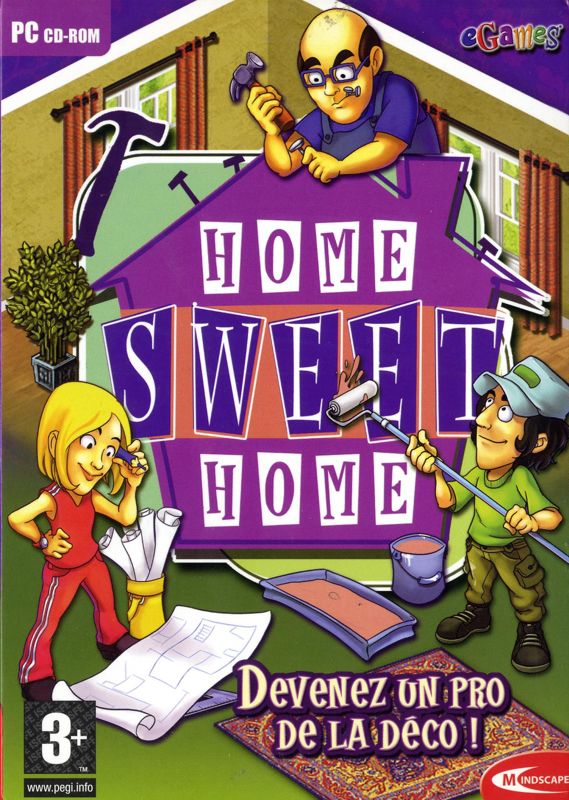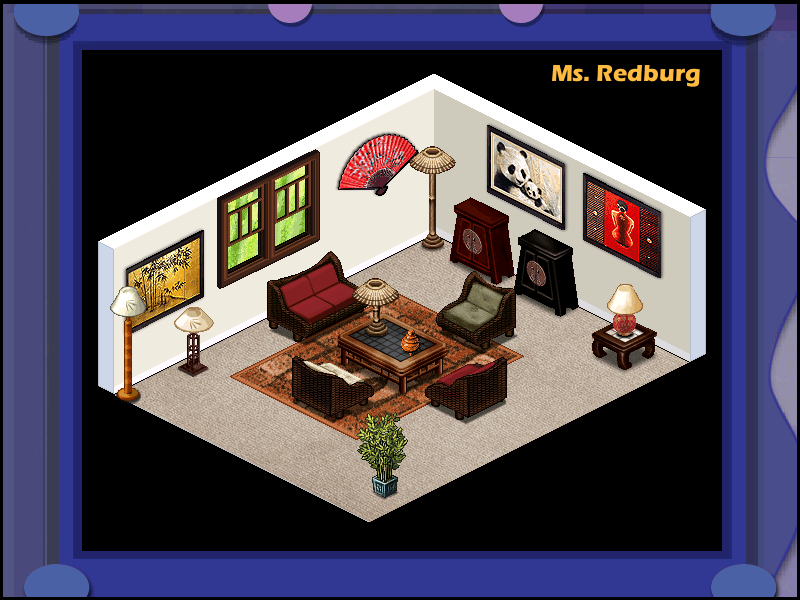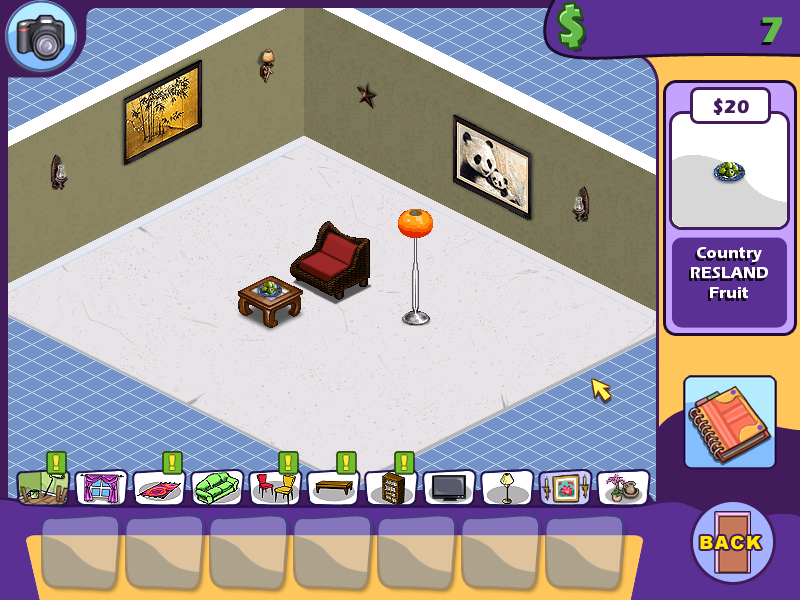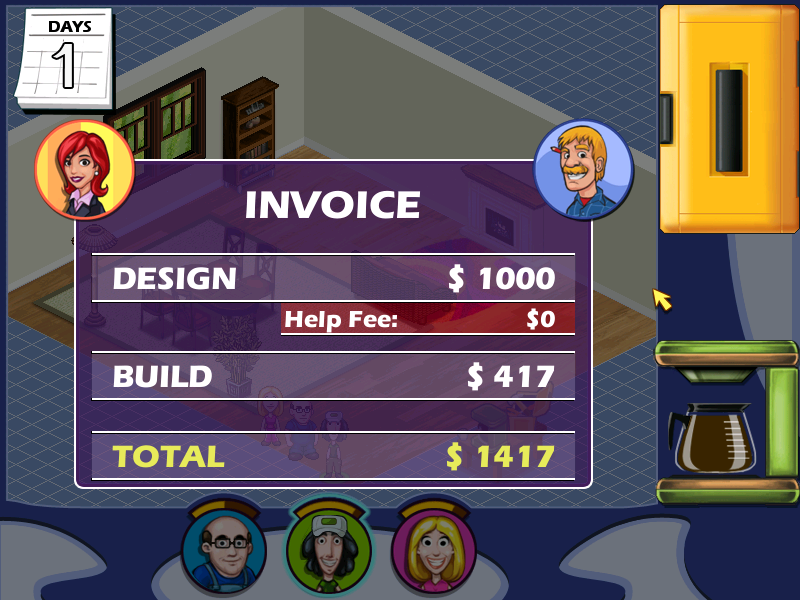Retro Replay Review
Gameplay
Home Sweet Home casts you in the role of a professional interior designer tasked with transforming empty rooms into personalized living spaces that satisfy demanding clients. At its core, the gameplay loop revolves around selecting furniture and décor items from a scrolling purchase menu at the bottom of the screen, placing them onto an isometric room layout, and carefully managing your client’s satisfaction meter. Each object placement nudges the thumbs-up meter higher—provided you stay within the client’s budget and taste—while misguided purchases or awkward arrangements can drive the meter downward.
(HEY YOU!! We hope you enjoy! We try not to run ads. So basically, this is a very expensive hobby running this site. Please consider joining us for updates, forums, and more. Network w/ us to make some cash or friends while retro gaming, and you can win some free retro games for posting. Okay, carry on 👍)
A distinctive element of the game is its two-phase approach: planning and building. After you’ve filled the room blueprint with objects, the build button starts flashing once you reach the required satisfaction threshold. Clicking it transitions you into the construction phase, where you assign workers to bring your designs to life. You click on a worker’s portrait, select a blueprint feature, and watch the item gradually fill from blueprint grey into full color. This mechanic adds an engaging layer of resource and time management; you must monitor each worker’s stamina bar and drag a jar of coffee onto them whenever they run low, lest construction grind to a halt.
Further complexity arises as workers occasionally pause to request specific tools from your toolbox, indicated by a speech balloon overhead. If you don’t supply the right tool promptly, newly built items begin to fade back into blueprint form, forcing you to juggle multiple tasks under the ticking clock. This dynamic keeps you on your toes and injects a satisfying tension, especially in later levels where room layouts grow larger and client expectations skyrocket.
Graphics
Visually, Home Sweet Home employs charming isometric graphics that give each room a dollhouse-like appeal. The clean lines and top-down perspective make it easy to plan furniture placement, while the mix of overhead and slightly angled views provides enough depth to appreciate decorative details. Windows, sofas, paintings, and smaller objects like coffee jars and lamps all have distinct silhouettes, ensuring you rarely misplace an item in the busy menu.
The game’s signature blueprint style offers clear visual feedback on your progress. Unbuilt objects appear as monochrome outlines over the floor grid, turning saturated and textured only when workers complete them. This real-time transition from blueprint grey to vibrant color is not only practical—it helps you immediately spot unfinished work—but also oddly satisfying, as each newly “constructed” chair or bookshelf springs to life.
Subtle animations, such as seeing the workers’ coffee jars refill slowly at the machine or objects wobble slightly if placed improperly, lend personality to an otherwise functional interface. While the overall art direction leans more toward utility than extravagance, occasional flourishes—like detailed rug patterns or sunlight streaming through windows—elevate the aesthetics and make each completed room genuinely feel like a lived-in space.
Story
Home Sweet Home doesn’t follow a traditional narrative with plot twists or character arcs. Instead, its “story” unfolds through the variety of client briefs you receive. Each level introduces a new homeowner with unique tastes, budget constraints, and furnishing requests—be it a minimalist monochrome loft or a cozy, eclectic living room bursting with color. These briefs serve as your guiding narrative, encouraging you to adapt your design sensibilities to different personalities.
Between levels, you’ll sometimes overhear brief snippets of client feedback, either praising your work for its harmony and functionality or lamenting the lack of a statement piece. These bite-sized dialogues add just enough flavor to foster a connection with the clients, making you care whether their thumbs-up meter stays green. While you won’t find deep character development here, the steady stream of new design challenges keeps the experience fresh and goal-oriented.
Ultimately, Home Sweet Home’s storytelling is subtle and emergent—it’s about the incremental satisfaction of meeting a client’s vision rather than following a predetermined tale. For players who prefer sandbox building with just a hint of context, this approach feels appropriate. If you crave a linear narrative or cinematic cutscenes, you may find the story light, but for pure design enthusiasts, the clients and their evolving demands provide all the narrative you need.
Overall Experience
Home Sweet Home shines as a streamlined and approachable design simulator that balances creative freedom with light management mechanics. The two-stage build system—plan first, construct second—introduces an enjoyable problem-solving rhythm, turning what could be a simple drag-and-drop exercise into a lively test of multitasking skills. Managing worker stamina, tool requests, and budget constraints adds a layer of strategic depth that keeps you engaged well past the beginner levels.
On the flip side, the game occasionally leans too much into repetitive tasks, especially in longer sessions where multiple rooms require similar decor items. Some players might wish for more exotic furniture sets or a deeper simulation of client psychology. Nonetheless, the core loop is solid, and levels advance at a steady pace that rarely feels too punishing or monotonous.
For anyone with a passion for interior design and a taste for casual strategy, Home Sweet Home delivers a satisfying blend of planning, customization, and light time management. Its intuitive interface, pleasing art style, and the gratifying transition from blueprint to reality make it an excellent choice for both design newcomers and veteran decorators seeking a portable, bite-sized creative outlet.
 Retro Replay Retro Replay gaming reviews, news, emulation, geek stuff and more!
Retro Replay Retro Replay gaming reviews, news, emulation, geek stuff and more!









Reviews
There are no reviews yet.